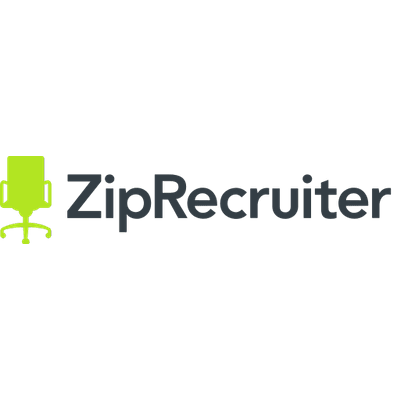As a small business owner, I understand the excitement and challenges that come with expanding a team. Hiring isn't just about finding the right talent – it's a nuanced dance of organization, communication, and strategy. Through my own journey of hiring for my team, I've encountered the tricky balancing act of ensuring every new team member feels welcomed, well-equipped, and integrated, no matter where they are in the world.
Whether you're a seasoned entrepreneur or stepping into the world of hiring for the first time, this checklist is designed to streamline your process and ensure no critical step is missed. From the first welcome email to setting up virtual meet-and-greets, every step matters in building a successful, cohesive team.
Keep reading to discover a new hire checklist to make sure you don't miss any essential aspects of the onboarding process.
Post Your First Job Free With ZipRecruiter Start with ZipRecruiter today to find the best candidates out there.
Why Is A New Hire Checklist Important?
A new hire checklist is crucial for businesses of all sizes, particularly for small business owners and entrepreneurs. This tool ensures that the onboarding process is organized, comprehensive, and adapted to the unique needs of smaller operations. It guides you through all the necessary steps, from completing essential paperwork to providing the right training, ensuring your new hire is well-prepared and supported for their role.
For small businesses and solo entrepreneurs, where resources might be limited and every team member's impact is significant, a new hire checklist becomes even more vital. It ensures that nothing is overlooked in the hustle of daily operations. This checklist helps maintain a structured approach, allowing you to onboard effectively without the extensive HR support systems larger corporations might have.
By implementing a clear and tailored new hire checklist, you and your new employee can embark on this journey with confidence, knowing that every critical aspect of the onboarding process has been addressed. This is not just about compliance; it’s about creating a welcoming and efficient environment that fosters growth and productivity from day one.
If you are still in the process of hiring, we recommend posting your opening on one of the top job posting sites.
New Hire Checklist
Make The Position Official
- For Small Businesses/Entrepreneurs: If there's no formal HR department, the owner or a designated team member can take on these tasks. Consider using digital HR tools for efficiency.
- For Larger Corporations: Utilize your HR management system to streamline these processes. This likely begins with submitting a hiring request to HR.
- Provide the new hire with an offer letter or employment contract.
Do A Background Check
- Conduct a comprehensive background check covering criminal history, employment history, and education verification.
- Remote Hiring Consideration: Ensure compliance with the legal requirements for background checks in the candidate's location, which may differ from your own.
Prepare New Hire Paperwork
- Gather necessary tax documents, contracts, and agreements.
- Provide payroll information and other required forms.
- Supply the employee handbook and details about the benefits package.
- Small Business Tip: For smaller teams, ensure that paperwork reflects the specific nature of your business and the role.
Prepare Devices And Equipment
- Set up the new employee's computer, phone, and any other tools required for their job.
- Ensure the new hire has all necessary login credentials.
Prepare The Workspace
- In-Person Hires: Set up the new employee's desk, and computer, and provide necessary supplies.
- Virtual Workspace for Remote Hires: Set up digital workspaces, including access to online collaboration tools and communication platforms.
Schedule New Hire Orientation
- Conduct orientation covering job responsibilities, compensation, and company culture.
- Tailor the program to address specific company policies and procedures.
- Conduct virtual orientation sessions, utilizing video conferencing tools to introduce company culture and policies.
Send A Welcome Email
- Introduce the new employee to the team.
- Provide essential information about the company and what to expect on their first day.
Schedule A Workplace Tour
- Familiarize the new employee with their surroundings for a more comfortable work environment.
- Offer a virtual tour using video content or live video calls for remote hires.
Assign A Mentor
- Provide support and guidance by assigning a mentor.
- Help the new employee acclimate to the company culture, answer questions, and offer feedback.
- For remote hires, ensure the mentor is adept at virtual communication and can provide support across different time zones if necessary.
Facilitate Team Introductions
- Introduce the new employee to the team to foster a sense of welcome and value.
- Encourage relationship-building with colleagues.
- Utilize video meetings or team collaboration platforms for remote introductions.
Set Up Follow-Up Check-Ins
- Establish regular check-ins to ensure the new employee's adjustment and promptly address any issues.
- Emphasize the importance of these in remote settings to ensure the new hire is integrating well.
By systematically addressing each stage of the onboarding process, both the new employee and the employer can navigate the transition with confidence and set the stage for a successful tenure.
New Hire Checklists for Employers For The First Year
When a new employee joins a company, it's important to make sure they feel welcomed and supported from day one. A new hire checklist can help ensure that the employer covers all necessary aspects of onboarding. Here are some guidelines for a new hire checklist for the first year.
Day One
- Conduct a general job orientation with a tour and introductions.
- Review the first week's schedule and work hours.
- Review professional ethics and the code of conduct.
- Review all policies, such as safety and security policies.
- Explain compensation and benefits.
Week One
- Assign a mentor or buddy to the new hire.
- Set up regular check-ins with the new hire to ensure they are adjusting well.
- Review the company culture and values.
- Introduce the new hire to their team members and colleagues.
- Provide an overview of the company's products or services.
Month One
- Review the new hire's performance and provide feedback.
- Provide additional training or resources as needed.
- Set goals for the new hire's first 90 days.
- Schedule a meeting with the new hire to discuss their progress.
After Three Months
- Conduct a performance review and provide feedback.
- Discuss opportunities for growth and development.
- Encourage the new hire to provide feedback on their experience so far.
- Review the company's mission and vision.
After Six Months
- Schedule a meeting to discuss the new hire's progress and goals.
- Provide opportunities for the new hire to take on new responsibilities.
- Encourage the new hire to participate in company events or initiatives.
After One Year
- Performance review: Schedule a performance review with the employee to discuss their progress and identify areas for improvement. This is also a good time to set new goals for the upcoming year.
- Training and development: Consider offering additional training or professional development opportunities to help the employee continue to grow in their role. This could include attending conferences, taking courses, or participating in mentorship programs.
- Compensation and benefits: Review the employee's compensation and benefits package to ensure that it is still competitive and aligned with industry standards. If necessary, consider offering a raise or additional benefits to retain top talent.
- Team building: Plan team building activities to help foster a sense of camaraderie and collaboration among employees. This could include social events, volunteer opportunities, or team-building exercises.
Why Use A New Hire Checklist?
Using a new hire checklist is a great way for employers to ensure that they don't miss any important steps when onboarding a new employee.
A new hire checklist is a comprehensive guide that outlines all the necessary tasks that need to be completed during the onboarding process, from paperwork to training.
By using a new hire checklist, employers can create a smooth and efficient onboarding experience for their new hires. This will not only help the new employee feel more comfortable and confident in their new role, but it will also help the employer save time and reduce the risk of missing any important steps in the onboarding process.
Ultimately, using a new hire checklist is a win-win for both the employer and the new employee.
Who Should Use A New Hire Checklist?
Any employer who wants to create a structured and comprehensive onboarding process for their new hires should use a new hire checklist.
It doesn't matter if the company is large or small, or if the new employee is a full-time employee or a temporary contractor. A new hire checklist is a valuable tool for any employer who wants to ensure that their new hires have a positive onboarding experience and are set up for success from day one. Research done by the Brandon Hall Group found that organizations with strong employee onboarding can increase retention by 82%.
Many HR managers and recruitment professionals recommend using a new hire checklist to ensure that all necessary tasks are completed and that nothing is overlooked during the onboarding process.
Bottom Line
Ultimately, a new hire checklist can set the tone for a successful and productive working relationship between the employer and the new employee. We hope this new hire checklist can help make hiring your next employee easier!
Find your next hire on ZipRecruiter today!













